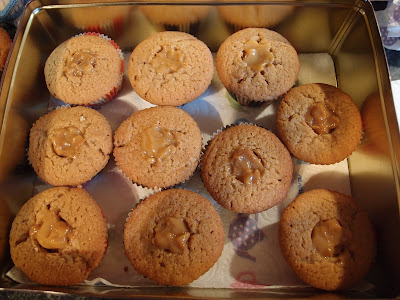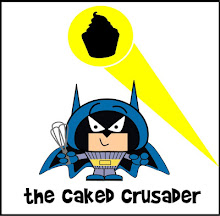Mr
CC and I had a lovely long weekend in Lincoln recently (Lincoln is in
Lincolnshire – England’s second largest county); it’s very hard to find much wrong
with a county that has two fabulous ginger biscuit recipes. I was going to
split the recipes into separate posts but spent so long wondering which one to
post first that I decided it would be easier to do a double post!
Grantham
gingerbread:
Lincoln ginger biscuits:
The biscuits are quite different; their only shared feature is ginger. Lincoln ginger biscuits are a crisp ginger biscuit with a buttery/syrup background that adds depth of flavour. They are a crisper, more buttery version of the ginger biscuits you will typically find in any supermarket. Grantham gingerbread is more unusual – it is a pale gingery, buttery rusk of a biscuit with a hollow, almost honeycomb style centre; not like any other gingerbread. Utterly addictive, we worked our way through the majority of the box we brought back in one sitting. It was only because we closed the box and moved it out of arm’s length that any survived to the next day!
Like many great recipes, Grantham gingerbread came about by a mistake. In the 1740s William Egglestone ran a coaching house in Grantham where people would stop for some rest and sustenance. He made a mistake, mixing up ingredients, for his Grantham Whetstones (a hard flat biscuit which was sold at the time) and created these puffy little delights, which were so popular he continued making them. Sadly, so many local bakeries have closed that it’s actually hard to find Grantham gingerbread for sale anymore. I hunted all over Lincoln and found them in one shop – this biscuit is too good to be allowed to die!
I made the biscuits per the recipes in the Lincolnshire cookbooks I picked up whilst on hols; I would make a couple of tweaks next time and note these in the ingredients listings below; mostly the tweaks are upping the amount of ginger - I like my ginger fiery!
If the biscuits alone aren’t enough to convince you to visit Lincoln then look at this – it’s the stunning cathedral, lit so beautifully at night that it glows with golden beauty!
Lincoln
ginger biscuits
Ingredients
350g
self raising flour
225g caster sugar
2 teaspoons bicarbonate of soda
2 teaspoons ground ginger – next time I would use 4 teaspoons
115g unsalted butter
10g golden syrup – next time I would use 30g to get a better spread whilst baking
1 egg, beaten
225g caster sugar
2 teaspoons bicarbonate of soda
2 teaspoons ground ginger – next time I would use 4 teaspoons
115g unsalted butter
10g golden syrup – next time I would use 30g to get a better spread whilst baking
1 egg, beaten
Method
Preheat
the oven to 180C/ fan oven 160C/ 350F/ gas mark 4.
Line
two baking sheets with non stick foil.
Place
the self raising flour, caster sugar, bicarb and ginger in a bowl and mix
together.
Heat
the butter and syrup together in a pan until melted and combined.
Pour
over the dry ingredients whilst mixing.
Add
the egg, again, whilst mixing.
Bring
the dough together into a firm, stiff ball.
Take
walnut sized pieces of dough and roll into balls.
Place
on the baking sheet – well spaced – and flatten. Place 12 per tray (I got 28 in total)
Bake
for 15-20 minutes or until golden brown and firm to the touch.
Leave
to cool on the baking sheets before moving to a wire rack to cool completely.
Bask
in to glory of the wonderful thing you have created.
Eat.
Grantham
gingerbread
Ingredients
340g
caster sugar
115g unsalted butter, at room temperature
1 egg
250g plain flour
½ teaspoon bicarbonate of soda
1½ teaspoons ground ginger – next time I would use 3 teaspoons
115g unsalted butter, at room temperature
1 egg
250g plain flour
½ teaspoon bicarbonate of soda
1½ teaspoons ground ginger – next time I would use 3 teaspoons
Method
Preheat
the oven to 150C/ fan oven 140C/ 300F/ gas mark 2.
Line
two baking sheets with non stick foil.
Beat
together the sugar and butter until light and whippy.
Beat
in the egg.
Fold
in the flour, bicarb and ginger.
Take
small balls of the dough and roll into balls
Place
on the baking sheet, spaced apart to allow for spreading, No need to flatten. Place 12 per tray; I chanced my arm with 15
and the touched. (I got 30 in total)
Bake
for 20 minutes, then turn the trays and bake for a further 20 mins (about 40
mins in total) or until golden and puffy.
Leave
to cool and firm up on the baking sheet before moving to a wire rack to cool
completely.
Bask
in the glory of the wonderful thing you have created.
Eat.
























